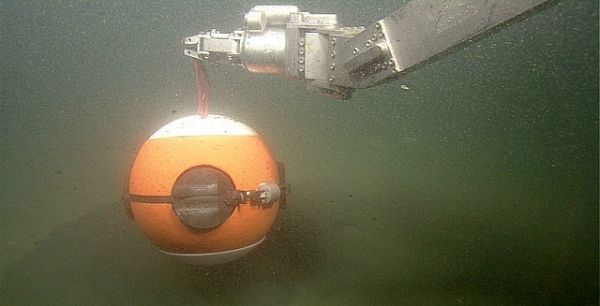Turbidity currents have historically been described as fast-moving currents that sweep down submarine canyons, carrying sand and mud into the deep sea. But a new paper in Nature Communications shows that, rather than just consisting of sediment-laden seawater flowing over the seafloor, turbidity currents also involve large-scale movements of the seafloor itself. This dramatic discovery, the result of an 18-month-long, multi-institutional study of Monterey Canyon, could help ocean engineers avoid damage to pipelines, communications cables, and other seafloor structures.
Geologists have known about turbidity currents since at least 1929, when a large earthquake triggered a violent current that traveled several hundred kilometers and damaged 12 trans-Atlantic communications cables. Turbidity currents are still a threat today, as people place more and more cables, pipelines, and other structures on the seafloor. Turbidity currents are also important to petroleum geologists because they leave behind layers of sediment that comprise some of the world’s largest oil reserves.
Read more at Monterey Bay Aquarium Research Institute
Image: Instruments such as this “benthic event detector” helped scientists discover how sediment moves during turbidity events in Monterey Canyon. Image Credit: Monterey Bay Aquarium Research Institute


